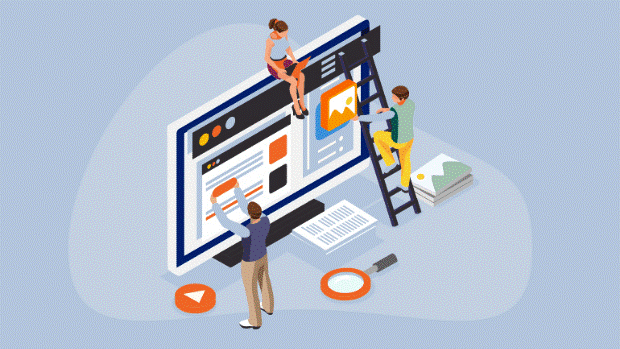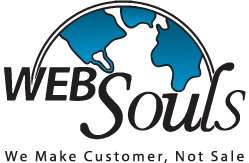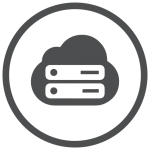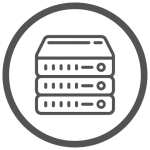Reducing the high bounce rate is one of the steps you take to improve the search performance of your website.
The percentage of all visitors that arrive at your website and leave without visiting any further pages is known as the bounce rate.
In other words, a high bounce rate is a sign that something is wrong with your marketing strategy. Either you are not attracting the correct visitors, or the visitors are not having a good user experience.
If you don’t have a web hosting plan from top web hosting providers in the UK, your website’s slow loading speed or low level of security may also be the reason behind a high bounce rate.

How to Increase Conversions & Reduce Bounce Rate?
Your website requires a major overhaul if you start to see a high bounce rate on your landing pages. A high bounce rate might indicate that your landing page is neither engaging nor well-structured.
Firstly, if you don’t have web hosting from top web hosting providers in the UK, get that, and afterwards, try out these 8 tested techniques to increase website conversions and decrease bounce rates:
1. Avert Pop-Up Ads
The number of website users who considered pop-up advertising bothersome in 2013 was close to 70%.
Most visitors continue to detest pop-up windows, and this hasn't altered recently.
Whether to employ pop-ups or avoid them is a hotly contested issue among website owners, marketers and top web hosting providers in the UK.
Pop-ups irritate visitors and increase bounce rates, so try to avoid using them. Pop-ups, according to some experts from top web hosting providers in the UK, are effective because they rapidly expand your email list. You may proceed in this manner if you so want.
Consider staying away from pop-ups, nevertheless, if you want to create a long-lasting website that attracts plenty of visitors.
2. Improve Your Content
A lack of new material on your website is one factor that might cause your target audience to abandon. When your content is distinctive and helpful, user experience starts.
Avoid writing long, intimidating walls of words, for example.
3. Choose Relevant and Valuable Keywords
Your content marketing efforts may succeed or fail based on your keyword strategy.
Start focusing on high-value keywords because that is where the high-value traffic is if you want to increase the search performance of your website.
Not every keyword is created equally. While other keywords will merely keep you waiting for a trip that might never arrive, some will drive your valuable traffic according to a top web hosting providers in the UK.
Writing content for your website alone won't increase conversions or lower bounce rates.
In order to attract high-value patients to you, you must target keywords with high-value traffic.
Influential keywords have a high value. They boost your authority and online reputation in addition to increasing the traffic to your website, patient engagement, and conversion rate.
4. By Blogging, Continually Upload New Content
A higher ROI will always result from keeping your blogs current and relevant. Regular blog updates by practices result in more leads than those who don't. It's important to distinguish between helpful and strong material, though.
Although it could be more appealing to your visitors, powerful content might not be able to resolve all of their issues.
Contrarily, valuable information will appeal to them and provide them with advice they can utilize to get results.
You can create momentum and earn confidence by continually releasing new and helpful material. It follows that your return visitors will start to outnumber new ones, which will probably result in an increase in your conversion rate.
5. Develop Unique Landing Pages for Pertinent Keywords
Your conversion rate will be higher the more landing pages you have.
You may provide your visitors with a deeper experience by using landing pages. You may improve the click-through rate by creating more landing pages.
The departure page is one of the KPIs that Google Analytics examines. You'll see on your dashboard that the majority of visitors are leaving from the home page.
A high bounce rate is correlated with the speed at which visitors leave your webpage. A 55 percent increase in leads was observed by certain practices that went from 10 to 15 landing pages. Furthermore, optimized landing pages reduce bounce rates.
This will greatly increase your conversion rates.
6. Target The Right Visitors
If you’re not targeting the right people, they won’t convert into customers and hence your bounce rate would be higher.
It's time to upgrade your content marketing and digital marketing approach if it isn't bringing in the correct customers and generating more income.
Nothing is more effective than releasing unique material that is pertinent to your industry and uses a content strategy that takes the buyer's journey into account.
7. Make Your Website Mobile-Friendly
Is your website responsive? Will your website appear flawlessly when potential customers use their cellphones and other devices to access it? Given that your customers carry their mobile devices everywhere, now is the ideal moment to make your website mobile-friendly.
Your website must be mobile-friendly because over 95% of your present and future customers use mobile devices.
Google has officially declared that a ranking criterion is mobile responsiveness.
This implies that if your website is not mobile-friendly, Google will not give it a high ranking, regardless of how helpful your content is or how simple the navigation is.
8. Boost Page Load Times
How crucial is page speed to users?
Visitors anticipate a web page to load in two seconds or less. Visitors will stop waiting for your website to load after three seconds and will instead visit one of your competitor’s websites.
Your bounce rate will increase if your website gets slower. Furthermore, Google also monitors website performance, which can lead to lower search ranks if your website routinely loads slowly. The bounce rate will increase as a result of this.
The simple conclusion is that a sluggish website can ruin your business and deter potential clients from contacting you to make an appointment.
In this post, we've covered a number of strategies for raising conversion rates while lowering bounce rates.
Even if you are able to cut your bounce rate in half without high-quality content, you run a great danger of seeing it rise once more. Make an editorial schedule and a content plan to prevent that.
Keep in mind that people who visit your website are looking for answers and outcomes.
They will leave your website if it does not provide them with the necessary response right away. The calls to action, navigation, design, and content must all work together to convey that you have what customers are searching for.
14 Sep 2022
 GBP (£)
GBP (£)
 USD ($)
USD ($)







